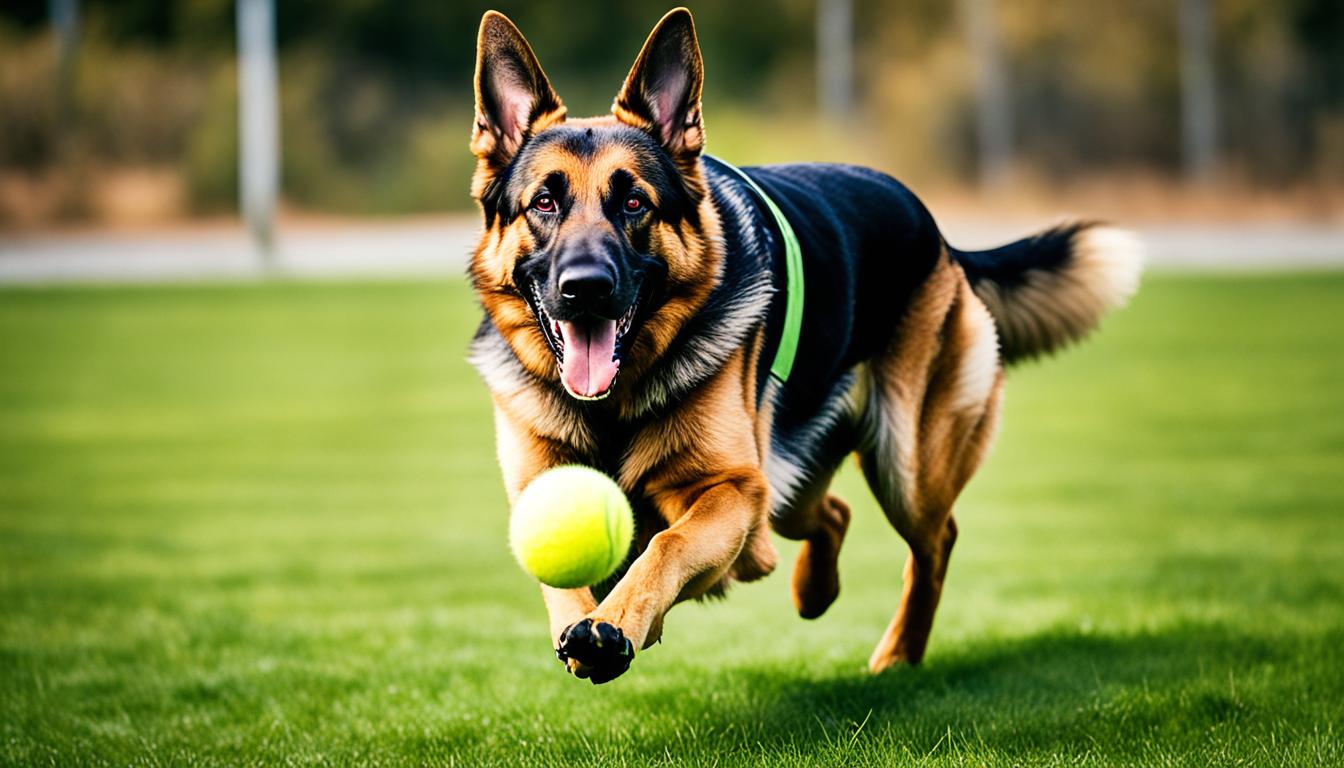Do German Shepherds Retrieve? Canine Queries Answered
Did you know that German Shepherds have a natural instinct for retrieving? It’s true! These intelligent and agile dogs excel at fetch and can learn to retrieve objects with ease. Let’s delve into the reasons behind this remarkable ability and discover how to harness it for a fun and engaging game.
German Shepherds possess a deep-seated work ethic and drive, which makes them perfect candidates for retrieving tasks. Their natural intelligence and physical agility further contribute to their retrieval prowess. When it comes to fetch, it’s not just a game for them – it appeals to their intelligent minds and keeps them mentally stimulated.
Playing fetch with a German Shepherd also offers a way for them to expend their boundless energy. Their remarkable physical capabilities make them excel in athletic activities, and fetch provides the ideal outlet for their stamina and agility. It’s a win-win situation – their need for exercise and mental stimulation is met, while you get to witness their impressive abilities in action.
In the next sections, we will delve into why German Shepherds love to play fetch and how to teach your furry friend to retrieve. So, if you’re ready to enhance your bond with your German Shepherd and witness their retrieval talents, let’s dive in!
Why Do German Shepherds Like to Play Fetch?
German Shepherds have a natural inclination towards playing fetch due to their instinctive retrieval skills and work-oriented nature. This activity appeals to their intelligent minds and provides them with mental stimulation, while also allowing them to channel their physical energy. Let’s explore the reasons why German Shepherds enjoy playing fetch so much.
1. Retrieval Instincts and Work Ethic
As a working breed, German Shepherds possess a deep-seated work ethic and drive. They have been bred for tasks that involve retrieving items, making fetch an ideal game for them. When they chase after a toy and retrieve it, it fulfills their instinctive need to work and perform tasks, giving them a sense of purpose.
2. Mental Stimulation and Engagement
Fetch is not just a physical exercise for German Shepherds; it also provides mental stimulation. They enjoy the challenge of searching for and retrieving the toy, engaging their problem-solving skills. This mental stimulation helps keep them focused and engaged, preventing boredom and destructive behavior.
3. Physical Agility and Stamina
German Shepherds are known for their impressive physical agility and stamina. Playing fetch allows them to utilize these abilities to the fullest. The running, jumping, and retrieving involved in the game provide an excellent outlet for their excess energy, helping them maintain overall physical fitness.
Playing fetch is a win-win situation for both you and your German Shepherd. It allows them to satisfy their natural instincts, while also providing an enjoyable and fulfilling activity for both of you to bond over.
Benefits of Fetch for German Shepherds
| Benefits | Explanation |
|---|---|
| Mental Stimulation | Engages problem-solving skills and prevents boredom |
| Physical Fitness | Utilizes their agility and stamina for exercise |
| Bonding and Socialization | Strengthens the bond between the German Shepherd and their owner |
| Positive Reinforcement | Provides an opportunity for reward-based training |
How to Teach Your German Shepherd to Retrieve
Teaching your German Shepherd to retrieve can be a rewarding and enjoyable experience for both you and your dog. Follow these simple steps to start training your German Shepherd to become a proficient retriever.
Step 1: Choose the right toy. Select a toy that is enticing and appropriate for your German Shepherd’s size and strength. A toy that is durable and easy to grip will make it easier for your dog to grasp and carry during the retrieval process.
Step 2: Find a suitable location. Look for a spacious area where your German Shepherd can run freely without any obstacles. An open field or a large backyard are ideal places to practice fetch, allowing your dog to focus on the task at hand without any distractions.
Step 3: Stimulate their interest. Engage your German Shepherd’s natural prey drive and capture their attention by using exciting and animated movements with the toy. Wave it in front of them, toss it up and down, and make it seem like an irresistible target.
Step 4: Introduce the fetch command. Start by throwing the toy a short distance and giving the command “fetch” or your preferred retrieval cue. Encourage your German Shepherd to go after the toy and bring it back to you. Be patient and give them time to understand the command.
Step 5: Reinforce retrieval behavior. When your German Shepherd successfully retrieves the toy and brings it back to you, reward them with praise and positive reinforcement. Use treats, verbal praise, and petting to show them that they have done well. Repeat the process, gradually increasing the distance of the throws as your dog becomes more comfortable with the exercise.
Remember, consistency and patience are key when training your German Shepherd to retrieve. Make sure to practice regularly and maintain a positive and encouraging attitude towards your dog’s progress. With time and dedication, your German Shepherd will master the art of retrieval and enjoy playing fetch with you.
FAQ
Do German Shepherds naturally retrieve objects?
German Shepherds have a natural instinct for retrieving due to their work ethic, intelligence, and physical agility. Fetch appeals to their intelligent minds and keeps them stimulated.
Why do German Shepherds enjoy playing fetch?
German Shepherds love to play fetch because it taps into their innate instincts to retrieve and work. It provides them with a task, sense of purpose, and mental stimulation.
How can I teach my German Shepherd to retrieve?
You can teach your German Shepherd to retrieve through a step-by-step training process. Choose the right toy, find a suitable play area, stimulate their prey drive, and gradually increase the distance of throws. Consistent training and positive reinforcement are key.







